
They say drawing is the foundation of all visual arts, and it’s really important for portraiture, where you have to be so exact. The work of portrait artist Mark Fennell has won awards and been shortlisted for many prestigious competitions, including our own SAA Artists of the Year, in 2019. In this article, he expresses his love for charcoal when creating self-portraits and shares how much he enjoys working with this artistic medium.
Mark’s list of essentials for charcoal self portraits. You can purchase the supplies you may need from Cass Art or click on the products listed below to take you direct to the product pages.
In my experience, drawing has definitely improved my portrait painting. The more I draw, the better my hand and eye coordination becomes; the more I draw – especially from life – the more I can understand the planes and subtleties of the human face.
I often draw and paint myself in between portrait commissions and other painting projects. After all, I’m a readily accessible life model and, as an artist, I can have total freedom of expression without fear of upsetting anyone. For centuries artists have painted and drawn self-portraits to mark a point in their lives and to help them through difficult times. I found that creating a self-portrait every week throughout 18 weeks of chemotherapy in 2018 really kept my spirits up and helped me through a difficult time.The great thing about portrait drawing is that I can easily fit it in when I’m busy, because portraits usually only take me a couple of hours. I enjoy working with charcoal as I like the similarity it has to portrait painting in oils: the notion of seeing masses rather than line. However, drawing myself from life in charcoal is a challenge, as I can’t rub out my mistakes, plus it’s hard to measure proportions using the measurement comparison method while drawing from my reflection in a mirror.
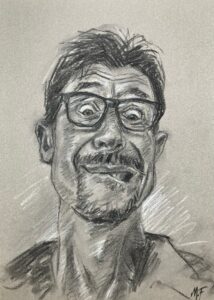 Just daft! Just daft! |
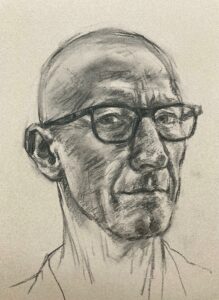 Self Portrait during Chemotherapy Self Portrait during Chemotherapy |
Drawing from a photograph on my iPad makes things a lot easier; I can work my way around the head, working out all the proportions by holding a paintbrush and compare everything, for instance, the distance from the chin to the bottom of the nose, compared to the distance from the bottom of the nose to the top of the eyebrows.As I construct the head, I squint my eyes so I can see the masses and tonal range more clearly, constantly comparing tonal values, for instance, how dark are my eyebrows compared to the dark ring under my right eye? I start by lightly drawing in shape and form, then I blend and smudge with my fingers and also use a brush for the bigger areas. I prefer a sketchy look to my portraits, so I work back into the softened mid tones with directional strokes, gradually working up the darker tones.
When I’m happy with the overall drawing, I pick out highlights with a kneadable putty rubber and use a blending stump or tortillion to lighten and blend some smaller areas, for instance, in and around the irises and edges of lips.
I like to experiment with different papers and prefer to use ones with some texture or tooth, because my drawing style is kind of rough and sketchy and I find these papers more forgiving than smooth ones. Sometimes I just use a stick of willow or vine charcoal on white cartridge or Strathmore charcoal paper, and on other occasions I’ll work on a darker tone of coloured pastel paper such as Canson Mi-Teintes, which gives me a nice mid-tone against which to work my darks and lights. After that I’ll use white chalk pastels and white Conté crayons to bring out the highlights.
For more information on Mark and his work visit: markfennell.co.uk/
Love what you’re reading? Join the SAA to unlock even more benefits! As a member, you’ll gain access to exclusive step-by-step tutorials and videos, discounts on art supplies, and inspiring competitions. Plus, receive your subscription to Paint & Create magazine and join a vibrant community of fellow artists. Don’t miss out—become a member today!
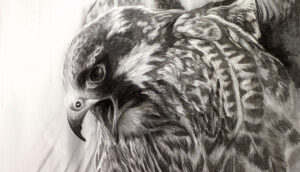
VideoCharcoal on Canvas with Becky Gouverneur |
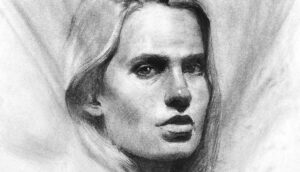
VideoLevelling Up: Charcoal Portrait Three Ways with Clive Bryant |
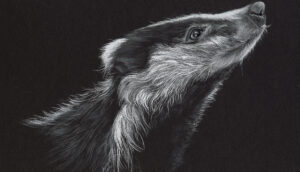
VideoBadger in white charcoal with Becky Gouverneur |
Notifications